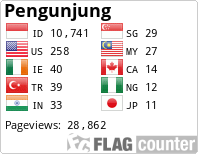Analisis Perilaku Hidup Bersih dan Sehat dengan Kejadian Penyakit Diare pada Anak di Kecamatan Meurah Mulia Kabupaten Aceh Utara
DOI:
https://doi.org/10.55606/jpmi.v4i2.5134Keywords:
PHBS, Clean Water, Diarrhea, Washing Hands with SoapAbstract
Diarrhea is one of the main health problems in developing countries, especially in Indonesia, which can be prevented through implementing Clean and Healthy Living Behavior (PHBS). This study aims to analyze the relationship between PHBS and the incidence of diarrhea in children under five (aged 0-5 years) in Meurah Mulia District, North Aceh Regency. The research method uses a quantitative descriptive approach with data collection techniques in the form of questionnaires, interviews and direct observation of 100 mothers of toddlers. The variables studied included the use of clean water, the habit of washing hands with soap (CTPS), and the use of healthy latrines. The results of the study showed that there was a significant relationship between PHBS and the incidence of diarrhea. As many as 21.4% of children from the group that used clean water experienced diarrhea, while this figure increased to 83.3% in the group that did not use clean water. In addition, only 16% of children in the group who did CTPS experienced diarrhea, compared to 84% in the group who did not do CTPS. Meanwhile, the use of healthy latrines also showed a significant effect, with 16.7% of children who used healthy latrines experiencing diarrhea, compared to 75% in the group who did not use healthy latrines.
Downloads
References
Centers for Disease Control and Prevention. (2021). Healthy living. https://www.cdc.gov
Depkes RI. (2019). Pedoman nasional pencegahan dan pengendalian infeksi. Jakarta: Kementerian Kesehatan Republik Indonesia.
Dusun, D. I., Desa, J., & Kecamatan, R. (2019). Hubungan perilaku higienis terhadap kejadian penyakit diare di Dusun Jagabaya Desa Rajadatu Kecamatan Cineam. Jurnal Kesehatan Masyarakat, 15(2), 105–110.
Fauziah. (2013). Hubungan faktor individu dan karakteristik sanitasi air dengan kejadian diare pada balita 10–59 bulan di Kelurahan Sumur Batu Kecamatan Bantargebang Kota Bekasi tahun 2013 [Skripsi, Universitas Islam Negeri Syarif Hidayatullah Jakarta].
Hamzah, B., Arsin, A., & Ansar, J. (2012). Hubungan perilaku hidup bersih dan sehat dengan kejadian diare pada balita di Kecamatan Belawa Kabupaten Wajo tahun 2012. Jurnal Kesehatan Lingkungan, volume dan halaman tidak tersedia.
Kejadian, D., Diare, D., & Puskesmas Ilir. (2023). Analisis perilaku hidup bersih dan sehat. Jurnal Kesehatan Masyarakat, 12(2), 375–381.
Kemenkes RI. (2021). Profil kesehatan Indonesia tahun 2021. Pusat Data dan Informasi Kesehatan (Pusdatin), Kementerian Kesehatan RI. https://pusdatin.kemkes.go.id
Kusumawati, O., Nugroho, H. A., & Hartono, R. (2010). Hubungan perilaku hidup bersih dan sehat dengan kejadian diare pada balita usia 1–3 tahun: Studi kasus di Desa Tegowanu Wetan. Jurnal Kesehatan Masyarakat, 11, halaman tidak tersedia.
Pengetahuan, H., Perilaku, H. B. S., Kelurahan Air Tiris, & Kecamatan Kampar. (2022). Hubungan pengetahuan dan perilaku hidup bersih dan sehat dengan kejadian diare di Kelurahan Air Tiris Kecamatan Kampar. Jurnal Ilmu Kesehatan, volume dan halaman tidak tersedia.
WHO. (2020). Water, sanitation, hygiene and health: A primer for health professionals. World Health Organization. https://www.who.int/publications/i/item/9789240014473
Downloads
Published
How to Cite
Issue
Section
License
Copyright (c) 2025 JURNAL PENGABDIAN MASYARAKAT INDONESIA

This work is licensed under a Creative Commons Attribution-ShareAlike 4.0 International License.









